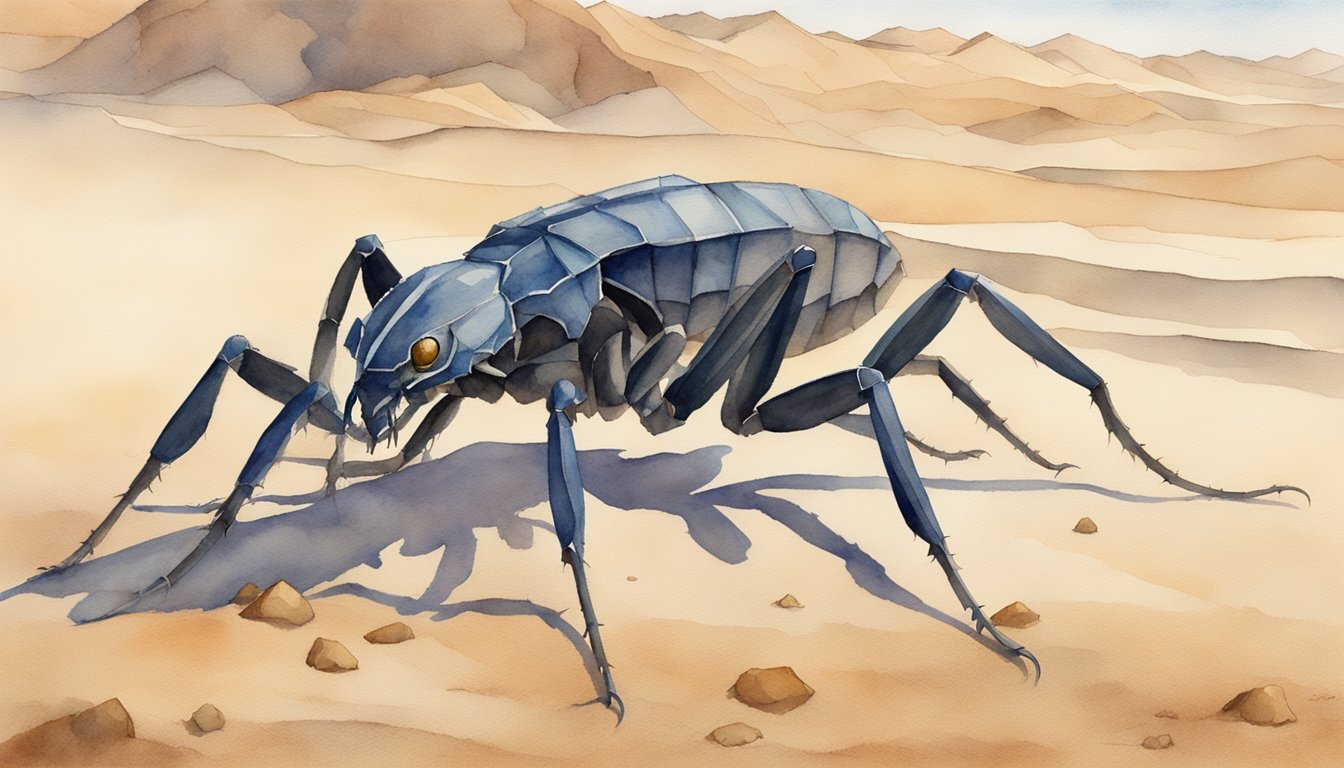Introduction to Vinegaroons
Vinegaroons, often called whip scorpions, are fascinating arachnids recognized for their ability to spray acetic acid—similar to vinegar—as a defense mechanism. They are a notable order within the Class Arachnida, devoid of venom but with remarkable anatomical and behavioral traits.
Classification and Anatomy
Vinegaroons are part of the order Thelyphonida and have a distinct appearance setting them apart from other arachnids. The class includes the family Thelyphonidae, with Mastigoproctus being a well-known genus. These creatures have a robust build: Their bodies consist of a prosoma and an opisthosoma. Unlike spiders, vinegaroons are equipped with long, thin, whip-like tails. Their most noticeable features are the large pedipalps used to capture prey and the pair of eyes atop their heads, with additional smaller eyes located near the front.
Habitat and Distribution
The habitat of vinegaroons is diverse, stretching across the warmer climates of the southwest United States, including Arizona, New Mexico, Texas, and Florida, extending to parts of Mexico. These arachnids tend to dwell in areas such as the desert, tropical regions, and pine forests, where they can often be found under rocks and in burrows.
Behavior and Diet
As carnivores, vinegaroons primarily feed on insects and utilize their sensitive pedipalps to detect vibrations from their prey. They lead a nocturnal lifestyle, hunting for insects like crickets and arthropods. When threatened, vinegaroons deploy a spray of concentrated acetic acid as a defense mechanism to thwart predators and ensure their survival.
Reproduction and Lifecycle
The reproduction of vinegaroons involves complex mating rituals, with males depositing a spermatophore that the female picks up to fertilize her eggs. Females then carry the eggs in a specialized sac. The young undergo multiple stages of molting before reaching maturity. During these stages, they grow from vulnerable nymphs to become skilled predators in their own right.
Human Interaction and Miscellaneous Facts

Vinegaroons, also known as whip scorpions, are unique arachnids that exhibit intriguing behaviors and possess various features that both distinguish them from other invertebrates and have captivated the interest of humans. From their role as exotic pets to their contributions to biodiversity, these creatures offer a wealth of interest.
As Pets and in Captivity
Vinegaroons, particularly the Giant Vinegaroon (Mastigoproctus giganteus), are kept as exotic pets by enthusiasts. They require a warm and humid environment that mimics their natural habitat. In captivity, their diet can include insects like crickets and worms. Vinegaroons are known for their calm demeanor and are less likely to pinch with their pincers compared to scorpions, making them a manageable pet for those interested in less conventional arachnids.
Environmental and Protective Characteristics
These arachnids thrive in a variety of environments, from deserts to tropical regions. Their ability to spray acetic acid as a defense mechanism is reminiscent of skunks and serves as an effective deterrent against predators. This vinegar-like substance is emitted from their anal glands and can dissuade would-be predators, a testament to their unique protective adaptations.
Unique Features and Interactions
Vinegaroons are not venomous and do not possess silk-spinning glands like spiders. However, they have a long, whip-like tail, not for stinging but for sensing their surroundings. Unlike many other invertebrates, vinegaroons use their pedipalps, which are modified to resemble pincers, for grasping prey and for sensory perception, much like the antennae of insects.
Conservation Status and Threats
Most vinegaroon species are not currently considered to be at risk of extinction. However, as with many specialized species, they could be susceptible to threats such as habitat destruction and climate change. Conservation efforts are important to maintain the diversity of these creatures in the wild.
Cultural and Scientific Interest
Scientifically, vinegaroons are a subject of curiosity due to their unique anatomy and place within the arachnid family tree. They are distinct from both spiders and scorpions while sharing characteristics with both. The lineage of vinegaroons contributes to our understanding of arachnid evolution, and ongoing research continues to uncover the rich diversity within this group of arachnids.

